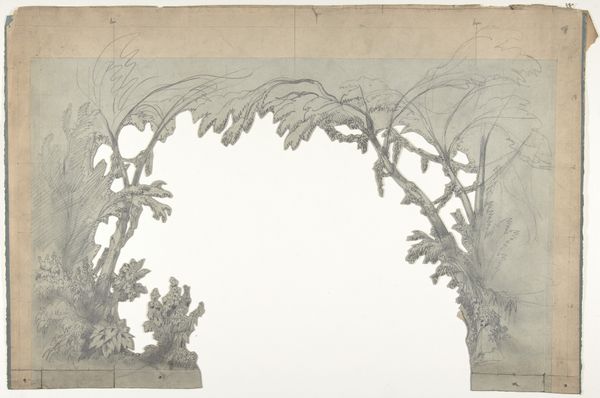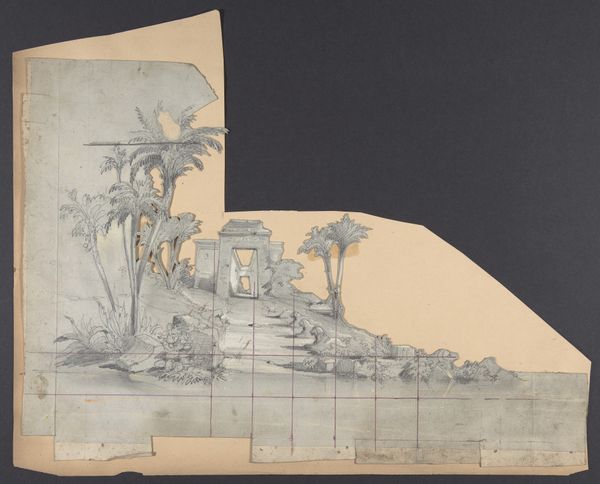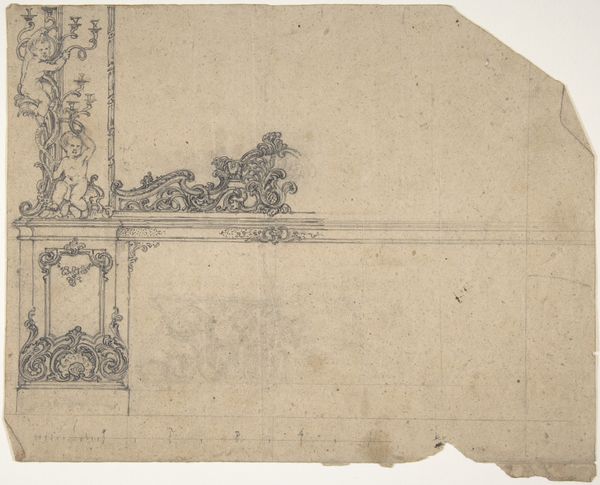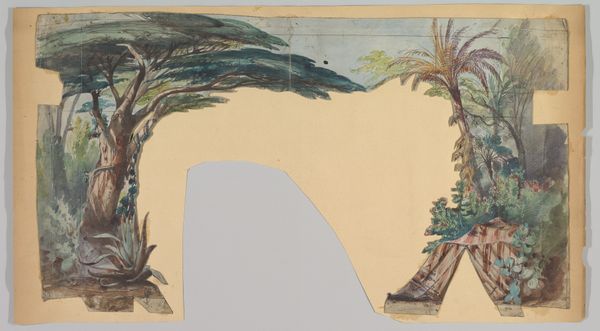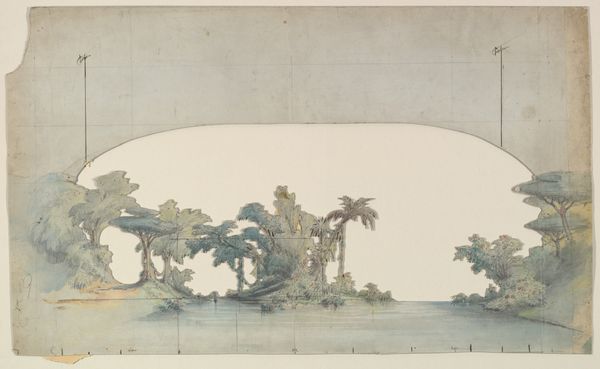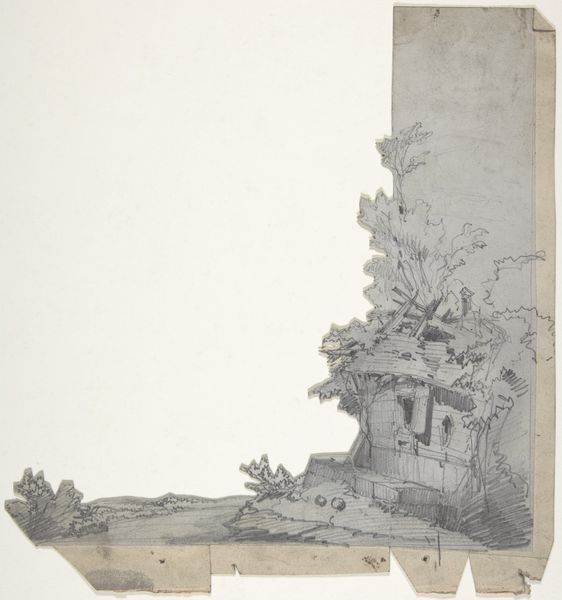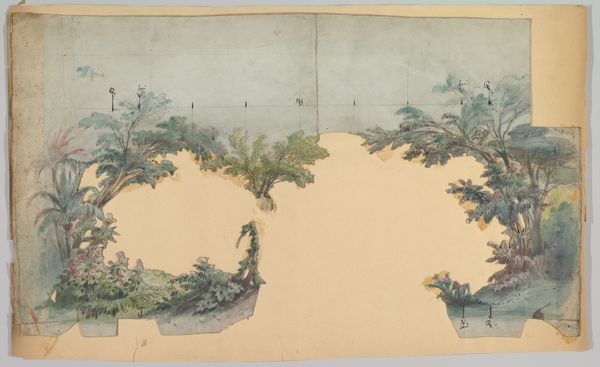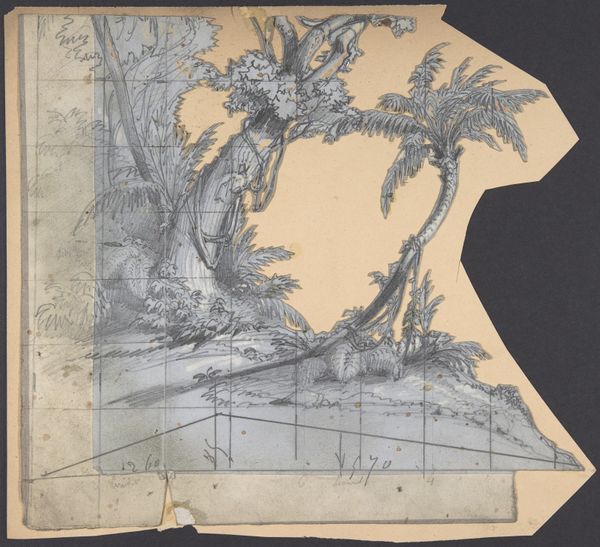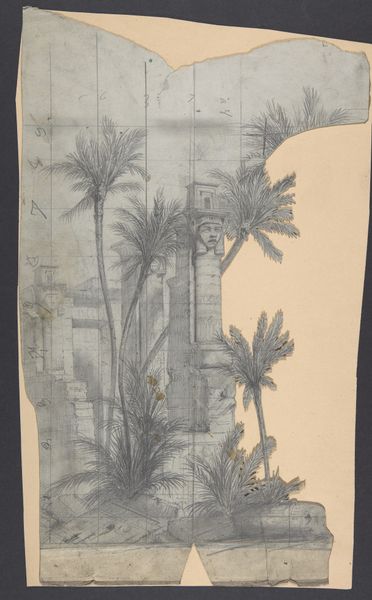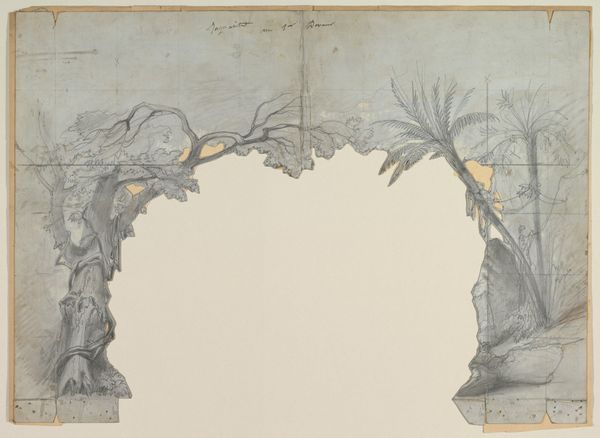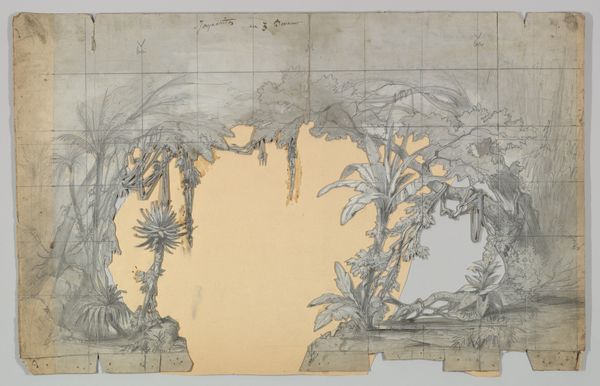
Design for a Stage Set at the Opéra, Paris 1830 - 1890
0:00
0:00
drawing, print, pencil
#
drawing
#
neoclacissism
# print
#
landscape
#
pencil
#
history-painting
Dimensions: Irregular sheet: 12 13/16 x 21 3/8 in. (32.6 x 54.3 cm)
Copyright: Public Domain
Curator: Eugene Ciceri's, "Design for a Stage Set at the Opéra, Paris" rendered between 1830 and 1890, provides a behind-the-scenes glimpse into 19th-century theatrical production, showcasing a meticulous pencil drawing on paper. Editor: Immediately, I see a delicate rendering. The sparseness makes me think of ghostly scenery awaiting vibrant color and the drama of the stage. It feels incomplete, a skeleton of a world ready to be brought to life. Curator: Indeed. The grid underlying the sketch reveals its intended functionality—a scaled template for scenic construction. Notice the classical landscape elements, reflecting the taste for historical themes common in opera of that period. The materiality speaks volumes about the division of artistic labor. Editor: Absolutely, it's fascinating to consider this piece as a blueprint rather than just a standalone artwork. It highlights how "art" often served very practical functions within a larger system of production. It’s a window into the collective labor that goes into illusion. The trees are a bit spooky if you ask me; do you know if there was anything a bit morbid about these operas or set of operas this backdrop could have been made for? Curator: While opera of that era embraced spectacle, morbidity wasn’t always central, though tragic themes certainly featured. What interests me is the tension between the hand-drawn quality and its ultimate industrial purpose, demonstrating how emerging technologies shaped artistic processes, with a material expression of control via design. Editor: I guess, for me, that intersection of the hand and machine lends this piece its quiet beauty. Knowing that so many hands were involved adds depth; it ceases to be a single artist's vision. Curator: Exactly! The commodification of art and aesthetic experience is already fully underway, reflected directly in its materiality. A stage set isn’t complete without actors, costumes, music and lights; together those components are the complete product to be consumed. Editor: Seeing the means of production here, sketched out with the plan apparent, helps reveal so much! Curator: I find it all exceptionally illustrative regarding the cultural industries of the 19th Century and thank you for giving me your insights today.
Comments
No comments
Be the first to comment and join the conversation on the ultimate creative platform.
